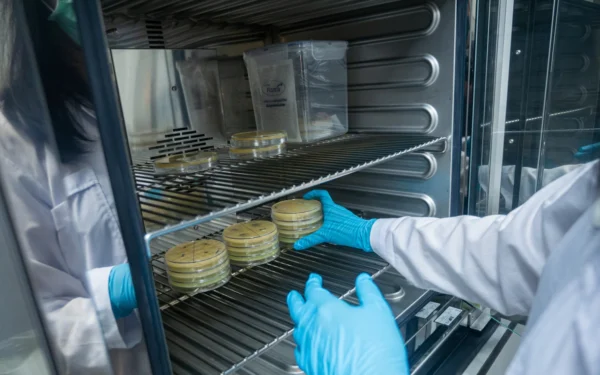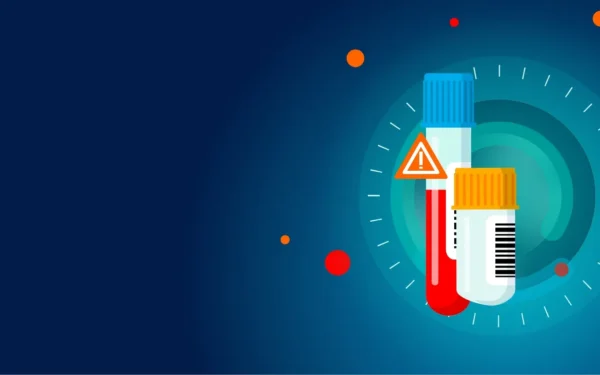In the last decade, machine learning (ML) has emerged as a transformative force in pharmaceutical research and development (R&D). ML refers to a range of computational methods that learn from large, complex datasets to generate predictive and descriptive models. While the AI chatbots are a visible offshoot of ML, the field is much broader, encompassing foundational techniques such as analysis of genomic and high-content imaging data.
In the life sciences, ML is being increasingly applied to antibody discovery workflows. Algorithms can predict antibody developability by assessing features such as solubility, stability, and aggregation risk before experimental testing. ML models are also assisting in epitope mapping and paratope prediction, enabling faster identification of likely binding regions. By uncovering hidden correlations and prioritizing candidates for validation, ML helps researchers streamline screening, reduce attrition rates, and accelerate the path from discovery to development.
However, as labs increasingly invest in ML, many find that their existing software systems are not designed to meet the demands of this technology.
For lab managers overseeing antibody discovery programs, selecting ML-enabled software is a pivotal decision. A poorly chosen solution can create bottlenecks, frustrate scientists, and lead to missed opportunities, while the right software can streamline workflows, boost predictive accuracy, and help bring life-changing therapies to patients faster. This article outlines the key criteria lab managers should consider when evaluating software to support ML-driven antibody discovery.
Data-Intensive Antibody Discovery
As machine learning algorithms have advanced, the primary limiting factor has shifted from computational power to the availability and quality of training data. Unlike traditional biostatistical approaches, ML models do not rely on hard-coded biological rules; instead, they infer patterns directly from the data. So the effectiveness of machine learning depends on having sufficiently large, diverse, and representative datasets.
Antibody discovery is inherently data-intensive, making it a strong fit for ML applications.. Modern platforms such as phage display, single-cell RNA sequencing, and next-generation sequencing (NGS) generate vast amounts of sequence, binding, and expression data. This creates an opportunity for antibody discovery teams to leverage machine learning for novel and powerful applications, ranging from antibody–antigen binding affinities to prioritizing candidates with favorable developability profiles..
However, realizing the full value of ML in antibody discovery hinges on navigating the obstacles of software adoption.
Common Challenges in Adopting ML Software
Despite its promise, integrating ML into antibody discovery workflows presents several challenges:
- Data silos: Experimental data may be stored in incompatible formats or across disconnected systems, making preparation for machine learning difficult.
- Lack of in-house expertise: Many life science labs lack data science personnel to train, validate, and maintain ML models.
- Complexity of models: Sophisticated ML models, such as deep neural networks, can be opaque, making it difficult for biologists to interpret results or trust predictions.
- Scalability limitations: Some tools may perform well in pilot studies but struggle with production-level datasets or multi-team integration.
- Regulatory concerns: The stochastic nature of ML predictions complicates data integrity, traceability, reproducibility, and audit-readiness, requirements for the run-up to clinical trials.
An effective ML platform must address these issues directly while making ML accessible and actionable for all team members, from computational biologists to wet-lab scientists.
Essential Features and Functionality
When evaluating ML software for antibody discovery, lab managers should focus on solutions that include:
- Integrated data management: Centralized repositories that support various data types (sequences, assay results, structural information) and ensure consistency, traceability, and version control.
- User-friendly interfaces: Dashboards and visualization tools that allow non-expert users to interact with predictions, interpret outcomes, and explore data.
- Customizable ML workflows: Support for building and adapting predictive models to lab-specific datasets and research goals, with low-code or no-code options.
- Scalable architecture: Cloud-based or hybrid deployment options that enable high-throughput processing, multi-site collaboration, and secure data access.
- Model transparency and explainability: Tools that clarify ML results by highlighting the features driving each prediction, building trust in outputs.
- Interoperability: APIs (Application Programming Interfaces) for integration with existing laboratory information management systems (LIMS), electronic lab notebooks (ELNs), and other laboratory tools.
By prioritizing these features, labs can deploy antibody discovery platforms that not only meet immediate project needs but also evolve with future research demands.
Benefits of Machine Learning in Antibody Discovery
The adoption of ML-enabled software in antibody discovery can reshape the R&D process in measurable ways:
- Faster lead identification: Algorithms can triage candidate antibodies based on predicted developability, reducing the number of variants that need to be tested experimentally.
- Improved hit-to-lead ratios: Predictive modeling increases the likelihood that selected leads will exhibit desired characteristics such as high affinity, stability, and low immunogenicity.
- Reduced resource waste: ML helps labs focus resources on the most promising candidates, reducing time and cost spent on nonviable leads.
- Enhanced collaboration: Cloud-based platforms with intuitive interfaces allow closer interaction between computational and experimental teams, accelerating iteration cycles.
- Data-driven decision-making: Real-time ML insights can guide project strategy, from target selection to lead optimization and manufacturability assessments.
These benefits are not just theoretical. Leading pharmaceutical companies have already documented shorter development timelines and higher quality candidates with well-designed ML platforms.
Choosing ML Platforms for Antibody Development
Selecting the right ML software is more than just a technological choice; it’s a strategic investment in innovation and operational excellence. When lab managers evaluate software against criteria such as ease of use, data integration, scalability, and scientific rigor, they empower their teams to extract the full value of the data.
The stakes are high. The wrong choice can stall discovery, while the right platform can accelerate progress, delivering higher quality therapies to patients sooner.





